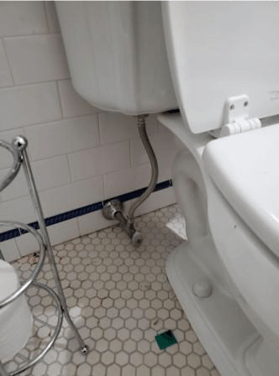How to Repair and also Stop Bathroom Water Damage
How to Repair and also Stop Bathroom Water Damage
Blog Article
What are your thoughts concerning How to Fix a Water Damage Bathroom?

The restroom is very at risk for moist accumulation as well as prospective water damages as a result of the frequent use of water in it. This post uses straightforward inspection techniques to assist finding water damages threats.
The frequent use of water in the restroom makes it incredibly prone for wet buildup and also possible water damage. By inspecting it routinely, you can minimize water relevant problems.
The adhering to collection of examinations is very easy to execute and should be done as soon as in every 3 months in order to maintain your shower room in good shape and to prevent possible water problems brought on by the tub, the shower, pipe joints and plumbing, sinks, cabinets, and also the commode
Do not disregard carrying out these evaluations and be thorough while executing them. Bear in mind that these easy inspections can conserve you a lot of money by providing very early indicators for water damages
Sinks as well as Cabinets
Sinks as well as cabinets are exposed to dampness and also moisture everyday and are usually forgotten. Check frequently under the sink and on the countertop over it. Fix any type of drip in the trap as it might recommend drain problems. Check out the sink, slow-moving draining pipes may show an obstructed drain. Replace sink seals if they are fractured or loosened.
Bathtub and Shower
The shower and also tub require unique interest and upkeep. Inspect the tiles and also change if broken. Make sure that there is no missing out on grout in between the ceramic tiles. Examine and also change cracked caulking at joints where the wall surfaces satisfy the flooring or the tub. Clogged drains pipes as well as pipelines issues will protect against the tub from drying out as well as may show major troubles below the bathtub. Talk to a professional quickly to avoid structural damages. Pay attention to discolorations or soft locations around the tub wall surfaces as they may show an interior leakage.
Plumbing
Signs for water damage are tough to discover since most pipelines are installed inside the walls.
Pay unique attention to floor covering and wall surfaces moisture as well as discolorations as they may show an invisible plumbing issue. Check wetness degrees in adjoining spaces too.
The Toilet
The commode is a vulnerable water junction. Examine the water lines and look for leakages around the toilet seat, in the pipe, and under the water tank. If you spot any type of indicators of moisture on the floor around the bathroom, look for leakages in the toilet edge and tank seals.
Understand that hanging bathroom dish antiperspirants increases the chances for blockages.
Water Damage Signs In The Bathroom To Avoid Cleanup
Musty smell
This is one of the easiest signs to catch because musty smells are so odorous. The damp, earthy, moldy smell should be a big red flag. The smell will develop when moisture gets trapped in surfaces, and begins to facilitate mold growth. Leaking pipes under cabinets, inside walls, and behind shower fixtures will cause moisture to stay trapped and not dry, which will lead to mold growth and spread. As soon as you notice any musty smells in your bathroom, have it checked for hidden water damage and cleanup signs.
Visible mold
If the smell isn’t there to give it away, sometimes you will actually see mold growth. Finding mold in your bathroom is a serious problem, because mold is very harmful to your health. By the time mold growth is visible, it also means that water damage has already occurred and been present for some time. The only way the mold problem can be resolved is to find the source of the moisture and get it stopped. To safely and adequately remove mold, you need to have professionals handle the remediation. Do not waste any time in getting mold problems addressed, fixed, and sanitized so that you can protect you and your family from the many respiratory symptoms caused by mold exposure.
Damaged floors
Bathroom floors should be able to withstand some exposure to water while still remaining in good condition. However, when excess exposure or water leaks occur, they will begin to damage even the most water-resistant flooring. If you notice any cracking, bubbling, staining, or warping on your bathroom floors, there is probably a water leak somewhere causing the distortion. If you notice areas of the floor have become softer, or even have a spongy feeling, there is probably damage to the subfloor. Subflooring is typically made up of plywood. When plywood is exposed to water or moisture, it will absorb it. Once it has become saturated, the weight of the excess water will cause the wood to swell and soften. Check the floors in your bathroom frequently to catch any of these sings before they lead to damaged subflooring.
Changes on walls
When water leaks behind walls, it will cause changes in the drywall. Peeling plaster, blistering paint, and soggy wallpaper are all good indicators that excess water is building up behind the wall. Water leaking behind drywall will cause it to swell and be soft to the tough. If you start to notice gaps along the trim of your walls, or where tile meets the wall, it could also be a strong indicator that there is a leak behind the wall. Any changes, distortion, or damage on the walls should be evaluated as soon as you notice it to prevent further water damage and cleanup.

As a devoted person who reads on Looking for Signs of Water Damage in the Bathroom, I was thinking sharing that article was really helpful. Sharing is good. Helping others is fun. We thank you for reading our article about Preventing Water Damage in the Bathroom.
Prices & Booking Report this page